
© Dee Conway, 2009. (Click image for larger version)
Hofesh Shechter Company
Uprising, The Art of Not Looking Back
London, Sadler’s Wells
27 April 2013
www.hofesh.co.uk
www.sadlerswells.com
If I were ever to succumb to a failing heart, then doing so at a Hofesh Shechter gig might provide that tiny grain of luck that could make all the difference in such a devastating circumstance. Sitting in the stalls, I fancied that the heavy resonance of the rhythmic beat of Shechter’s music pulsating through my body rattled my chest with enough power to provide an instant cardiopulmonary resuscitation.
I use the word “gig” to describe a Shechter event since the music (usually heavily influenced by percussion and often composed by Shechter himself) is as critical as the choreography. Loudness is a given and anyone with a susceptibility to extreme noise would be well advised to stay away. Under the influence of these ferocious rhythms, Shechter’s work is often soaked in an overwhelming macho virility (even when the cast has been mixed gender) and so this retrospective of two pieces from his back catalogue presented, superficially at least, a fascinating double-header with an all-male group (in Uprising from 2006) followed by an all-female piece made more recently (The Art of Not Looking Back, 2009).

© Andrew Lang, 2007. (Click image for larger version)
I have followed Uprising through various iterations. From its premiere in the intimate surroundings of The Place in 2006, through its reincarnation via The Choreographer’s Cut at the Roundhouse in 2009, and now in a conventional, large proscenium theatre here at Sadler’s Wells. Each setting has given Uprising a new cause, although my clear favourite remains the extended version at the Roundhouse, which presented a throbbing synergy of music, lighting and performance with the added frisson of audience participation. Here at Sadler’s Wells it began with a perplexing incongruity as the seven dancers strode menacingly in their familiar line to stand in a one-legged pose across a band of light at the front of the stage; only, this time, one dancer stopped early, breaking the formation and standing back from the light. It may be that the choreography required this irregularity or it might just have been human error but either way the visceral punch of that opening was a weaker blow than it should have been.
When I first saw Uprising at the Place, I likened its virile intensity to choreographed hooliganism, which is an allusion I now no longer see although the emphasis on the tribal interactions of a gang of young alpha males is certainly profound. Fighting and floor-based movement are continuing motifs. The opening line of men segues into a duet that appeared to be a back-alley rumble. Later, the dancers stand in a circle and begin with the matey gesture of playfully patting each other’s shoulder in a sequence that could have been accompanied by a jaunty “Awright”, but needless to say the thumping gets harder and leads to a slap before a riotous fight ensues; not in the “Hollywood” style of stand-up fisticuffs but in the much more realistic scenario of a heaving, throbbing mass of bodies wrestling on the floor.
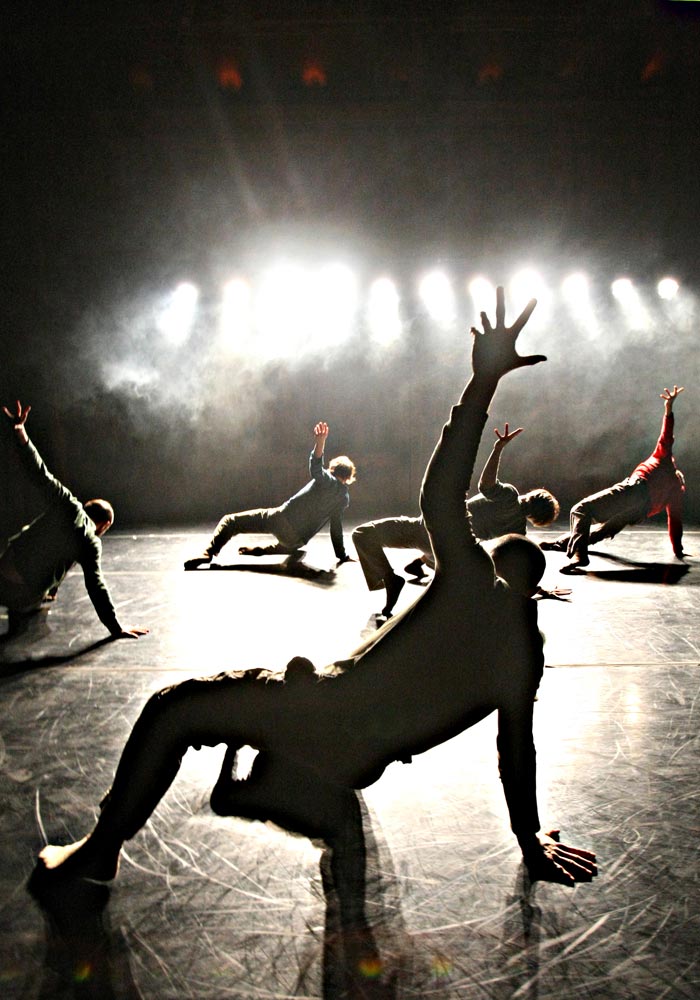
© Ben Rudick. (Click image for larger version)
Shechter’s own score ranges from the sounds of heavy turbines clanging in an engine room with precise rhythmic certainty, while the dancers appear for awhile to be skipping along a conveyor belt, to the violent scattered sounds of a tropical rainstorm. It ends with a tableau borrowing imagery from Iwo Jima of a group of men helping to raise a flag (although in this case it is a little red one that might have come from the top of a sandcastle).
Uprising is a powerful testosterone-fuelled fight club, played out in an unrelenting twilight of gloom, to sounds of toil and trouble, in an uncomfortable world that is as free of femininity as the exercise courtyard of San Quentin State Prison, after dark.
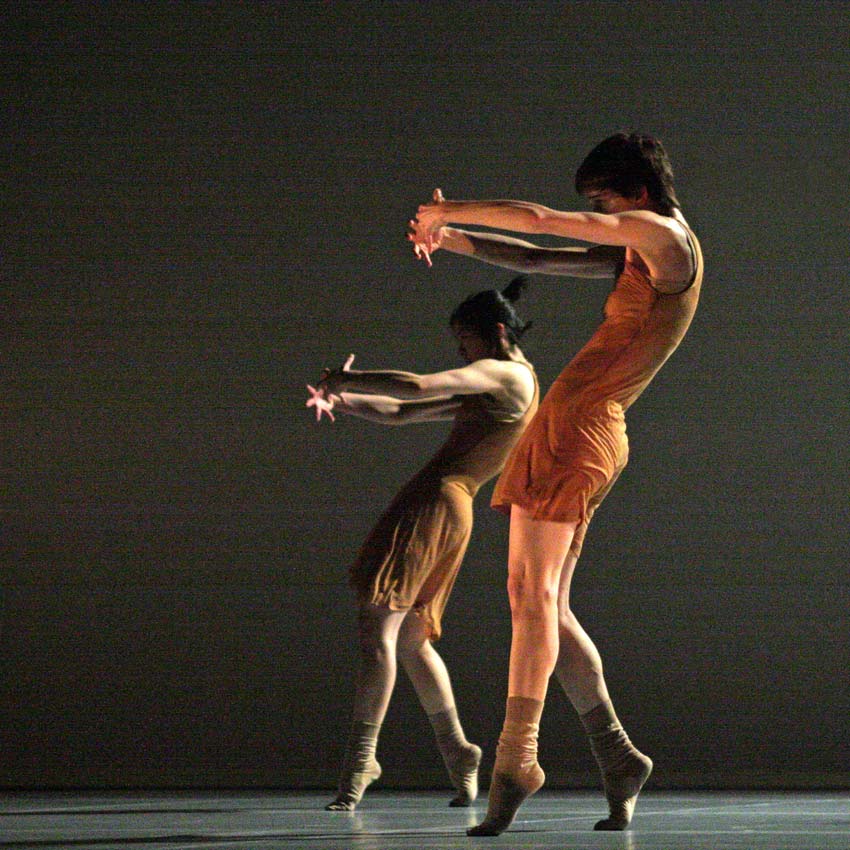
© Dee Conway, 2009. (Click image for larger version)
And then the women came in The Art of Not Looking Back, a work personalised by Shechter’s own opening voiceover about his mother leaving him at the age of two. The immediate juxtaposition to Uprising lies in light and sound: the former provides for sequences of brightness, often reflecting shadows of the performers against a side panel; and the score is led by music rather than percussive rhythms, involving excerpts from Bach, John Zorn’s LITANY IV and a song composed by Nitin Sawhney. But it is also peppered by loud and long screams that strike out like sudden aural slaps.
Shechter’s movement is coloured by quick switches and stops, by drooping bodies that have lost muscular control, and there are sudden segues into the formal harmony of six girls standing neatly in fourth position as if about to begin a ballet class. These elements have an undoubted feminising effect of gentleness and sensitivity (notably contrasting with the opening work) but Shechter’s voiceover shakes away any complacency. “She is everything to me because she is nothing to me” he says, before alluding to feelings draining away as if contained in a “bucket with a hole”. We are shocked into remembering that this work is railing against a mother’s decision to walk away. Sounds of vomiting and gagging heightened the emotional context; and we are left with a lone woman on stage, metaphorically drowning as Shechter’s voice says “I don’t forgive you”. This heart-rending finale morphs into an optimistic epilogue of a bouncy, lyrical song bringing this visceral performance to a conclusion by suggesting – without words – that the art of not looking back is the only way to forget.
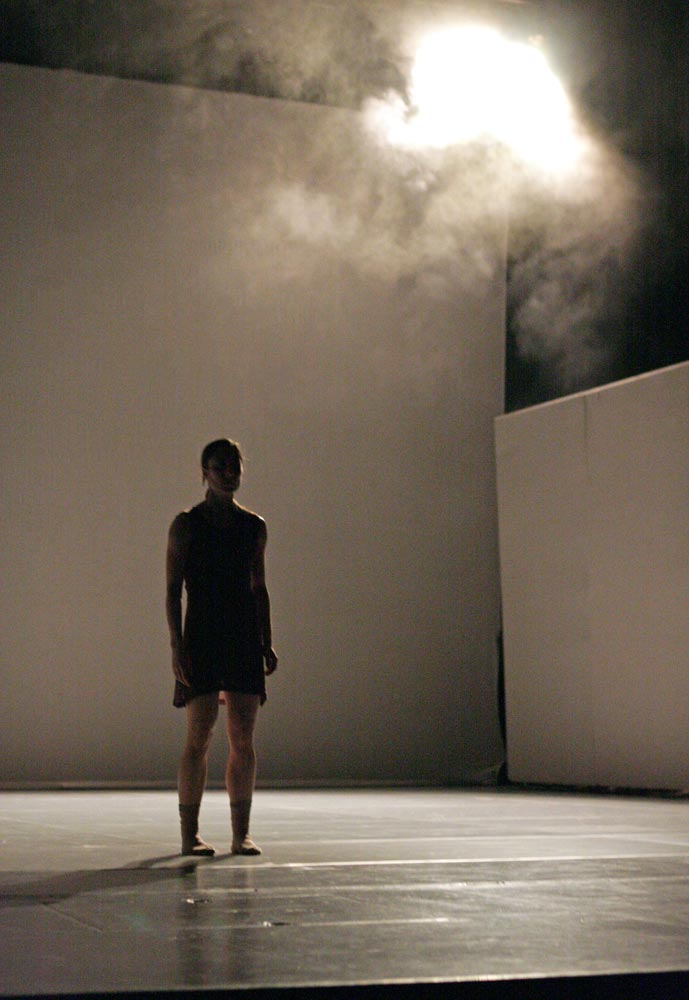
© Dee Conway, 2009. (Click image for larger version)
Shechter has evolved a way of maximising the impact of his repertoire by dusting off and replaying past work, sometimes in new Choreographer’s Cuts or – as here – in different theatres, rearranged settings and new pairings. Each revisiting seems to offer up more than the sum of its parts, giving these former works a new and exciting lease of life. One might say that – in his professional life at least – Shechter has perfected the art of looking back.













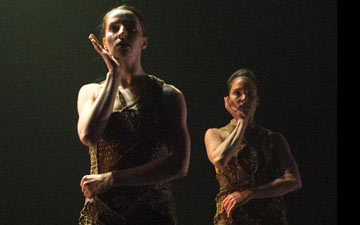
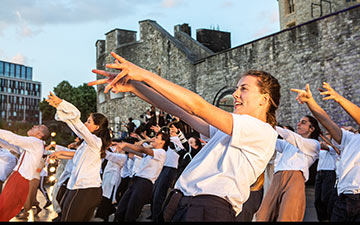
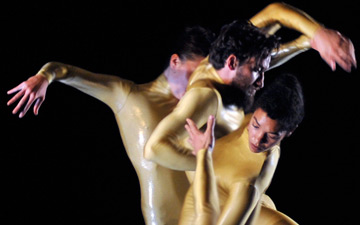

You must be logged in to post a comment.